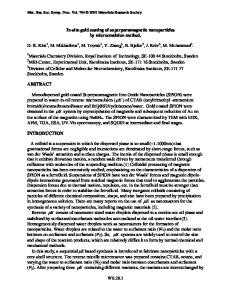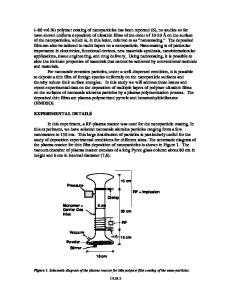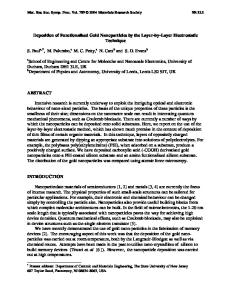In Situ Anchoring Ultra Small Au Nanoparticles by Conformal Coating of Carbon Layer within the Micro-Environments of Mes
- PDF / 2,754,020 Bytes
- 10 Pages / 595.276 x 790.866 pts Page_size
- 11 Downloads / 286 Views
In Situ Anchoring Ultra Small Au Nanoparticles by Conformal Coating of Carbon Layer within the Micro‑Environments of Mesoporous Silica for Highly Efficient Catalytic Reduction of 4‑nitrophenol Huikang Hu1 · Weiguo Kong2 · Weimin Jin1 · Chunxia Liu1 · Shijian Zhou1 Received: 27 August 2020 / Accepted: 25 September 2020 © Springer Science+Business Media, LLC, part of Springer Nature 2020
Abstract For the noble-metal based catalysts, the metal dispersion and sinter resistance of the metal nanoparticles (NPs) are the most vital factors for their application in series catalytic reactions. However, in the most noble-metal based catalysts, the weak interaction between metal NPs and support would be negative for these factors, and the poor catalytic performance would be obtained relatively. Committed to overcome these, in this work, the catalyst of Au@C/AMS would be designed and fabricated by the hydrothermal and calcinations process, in which the ultra small Au NPs are formed and stabilized in situ by the conformal coating of carbon layer in the micro-environment of mesoporous silica. The results demonstrate that the carbon layer would be directly formed in the mesoporous channels by calcinations in nitrogen atmosphere, and the ultra small Au NPs would be in situ anchored in the carbon layer. The average particle size of Au in Au@C/AMS is as small as 1.8 nm from TEM results, which is much smaller than those in the sample of Au/AMS without the protection of carbon layer. Besides, compared with the samples that the Au NPs are deposited on the outer and inner surface of mesoporous silica, a strong interaction would be built between Au NPs and support in the target Au@C/AMS sample. As expected, the catalyst of Au@C/AMS displays superior catalytic activity and stability in the liquid-phase reduction of 4-nitrophenol. The construction of this special architecture for Au-based catalysts could provide new sights for the design and fabrication of noble metal-based mesoporous materials with desirable catalytic activity and stability.
* Shijian Zhou [email protected] 1
State Key Laboratory of Materials‑Oriented Chemical Engineering, College of Chemical Engineering, Nanjing Tech University, Nanjing 210009, Jiangsu, People’s Republic of China
School of Chemical & Environmental Engineering, China University of Mining and Technology (Beijing), D11 Xueyuan Road, Haidian District, Beijing 100083, People’s Republic of China
2
13
Vol.:(0123456789)
H. Hu et al.
Graphic Abstract
In this work, the catalyst of Au@C/AMS would be designed and fabricated by the hydrothermal and calcinations process, in which the ultra small Au NPs are formed and stabilized in situ by the conformal coating of carbon layer in the microenvironment of mesoporous silica. Compared with the samples that the Au NPs are deposited on the outer and inner surface of mesoporous silica, a strong interaction would be built between Au NPs and support in the target Au@C/AMS sample. As expected, the catalyst of Au@C/AMS displays superior catalytic activity a
Data Loading...











